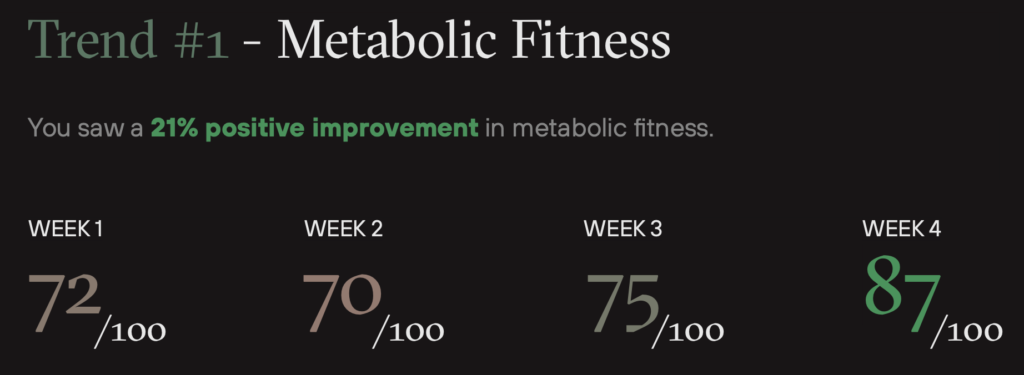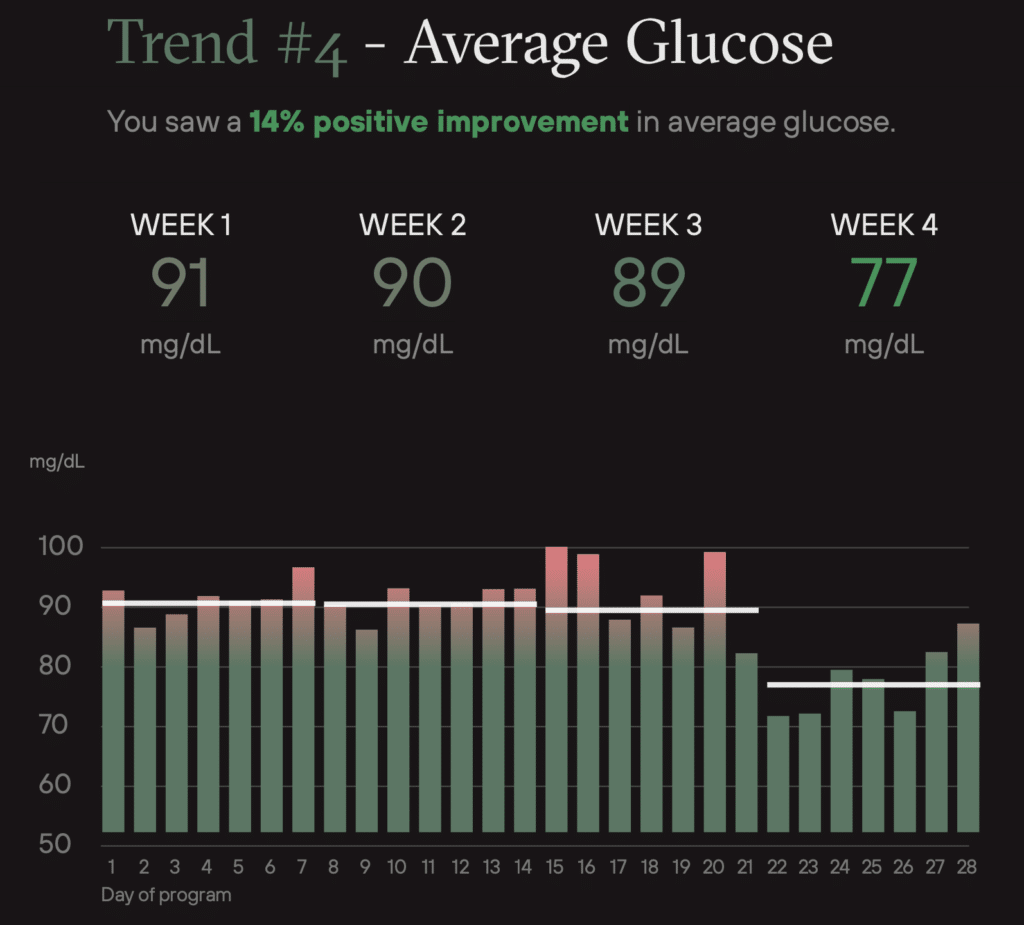
A Logical Approach To Fasting
You hear about fasting from all corners: health magazines trumpet it, online articles echo fasting’s benefits for this and that. Celebrities proclaim fasting their diet-du-jour, tech entrepreneurs tweet about 16:8 and 5:2.
The benefits of fasting are compelling: studies show links between fasting and increased longevity, healthier organs, better digestion and a stronger immune system. This at a time when Americans are getting less healthy. Life expectancy is decreasing. Obesity and chronic disease rates are rising. Though poorly understood, it’s increasingly likely that various aspects of the modern world are reducing health even among the healthy. The COVID-19 pandemic only made us more aware of the importance of immune health.
But fasting studies can only mean so much. Most studies of this sort are done in mice, or monkeys, or using biomarkers of outcomes in humans. This is because, to study a lifelong intervention like fasting in humans, a scientist would need to control the diets of a statistically representative pool of people, and measure their outcomes through death—a tall task. Further, medical ethics makes more extreme interventions, like long-term fasting, unfeasible.
More importantly, human biology is a massively complex system, about which we know relatively little. With any health decision, you have to triangulate between the current standard of care, cutting-edge and possibly-right research, logical explanations of biological pathways and evolutionary reasons, and what feels right. Also, there is more to life than health! We want our health to live, and living means something specific to each of us. That can include the joy of drinking with friends, eating too much barbecue, or (gasp!) smoking an occasional cigarette. There is also the fact that health interventions that don’t fit into a conventional lifestyle, like fasting, can be hard to follow.
This article proposes a fasting regime that balances health with living. Your faithful author has used this framework for nine months and measured the outcomes, which will be shown below. The regimen is simple: don’t eat for one day per week. Also known as a one day water fast, it’s best to do this fast early in the week (Monday or Tuesday), and involves not eating from the end of dinner on day one, until dinnertime on day two. A hard workout is often included.
This fasting routine “splits the middle” as it were, in terms of having a likelihood of maximizing the health benefits of fasting without meaningful life disruption. A 24-hour water fast, particularly one coupled with exercise, is likely to significantly capture the health benefits of fasting. These benefits, outlined below, include an increase in autophagy, or the destruction of old and weak cells, which is thought to promote longevity. Other benefits include better gut health, weight management, and blood glucose levels. Just as importantly, in this author’s experience, a “dinner to dinner” fast, early in the week is not at all disruptive to regular living. In fact, it makes the rest of the week that much sweeter.
The Scientific Case For A 24-Hour Fast
There is generally good research across species (one review is called “from yeast to humans”) suggesting that dietary restriction promotes life and health span, through reduction in age-related illnesses like cancer or neurodegeneration.
The prime mechanism linking fasting to better health is autophagy. Autophagy is the body’s process for removing damaged cells and proteins and “recycling” them into new components. Letting damaged cells live too long promotes the risk of cancer and other diseases of age. Notably, autophagy in general declines with age. Perhaps not surprisingly, the “recycling” process of autophagy is up-regulated when the body is hungry. The body has no food, so it is looking for any sources of nutrients it can find.
Autophagy seems to get turned up when the body switches from burning glucose (from food) to burning fat (from your body).
“One key mechanism responsible for many of these beneficial effects appears to be “flipping” of the metabolic switch. But what is this metabolic switch and how is it flipped? Here, we define the metabolic switch as the body’s preferential shift from utilization of glucose from glycogenolysis to fatty acids and fatty acid-derived ketones… The metabolic switch typically occurs between 12 to 36 hours after cessation of food consumption depending on the liver glycogen content at the beginning of the fast, and on the amount of the individual’s energy expenditure/exercise during the fast. “
The autophagic process is believed to give fasting its life-extending power.
In mice, bi-monthly fast-mimicking diet led to rejuvenation of the immune system and the liver, reduction in body fat without lean muscle loss, a reversal of bone density loss, and an increase in stem/progenitor cells and induced neurogenesis and improvement on cognitive tasks.
Autophagy in mice is shown to occur at 24 hours of fasting, including neuronal autophagy.
Outside of fasting, autophagy increases during intensive exercise, seeing the highest activation when exercise and fasting are combined. As such, it’s reasonable to guess that a 24 hour fast with heavy exercise has the biological impacts of a 30- or 36-hour fast.
Fasting helps with gut health. A 2019 study in mice with induced inflammatory bowel disease showing both 4-day fast-mimicking diet and water-only fast reduced inflammation and stimulated the growth of protective gut microbes.
Researchers found a month of daily time-restricted feeding in Ramadan promotes significant positive changes in gut microbiome.
And gut health is related to holistic health. A study of 24-hour water fasting in humans found reduction of TMAO, a byproduct of bad intestinal bacteria associated with increased heart disease.
Fasting for too long (aka “starving”) may be bad. As seen in this chart, lifespan in simple organisms increases as food intake declines all the way towards early starvation; however “fecundity”, or reproduction, declines as food is removed.
24-Hour Fasting Before And After Data
The inspiration for my 24-hour fasting routine came by chance. I’d been introduced to a company called Levels, a startup focused on metabolic health. Levels’ product is a continuous glucose monitor with an app. The monitor, or CGM, pops on to your upper arm with a “soft needle” that tucks just a little bit into your muscle. The CGM records your blood glucose levels and transmits the data to a smartphone app. The technology was originally developed for diabetics, but gained interest among the healthy due to correlations between elevated blood glucose and poor health outcomes.
As the theory goes, the “spikier” one’s blood sugar, the less metabolically healthy they are. Poor metabolic health makes it harder to sustain energy and maintain a healthy weight, and is linked to diabetes, Alzheimer’s, and a host of other chronic diseases.
Despite being lean and exercising vigorously, my blood sugar was still “spiky” when I first tried the CGM. After a breakfast of yogurt, granola, and fruit, my glucose would shoot north of 140 mg/dL, above the healthy range. I came to realize that, like many Americans, my metabolic health was not great, my body could not switch from “sugar burning” to “fat burning” mode quickly enough, with the consequence of blood sugar spikes and inflammation (and the long-term health concerns associated with that).
But I didn’t want to radically alter my diet. My diet was not unhealthy—not a lot of processed or packaged food or added sugar, not a lot of cheap meat or vegetable oil. Nor am I ready to give up a few weekend drinks with my friends, or desserts, or submit to the cognitive overhead of constant self-monitoring. So, I decided to try fasting.
Over the last nine months, I have completed a 24-hour water fast every week, excepting one or two. The impact on my overall blood glucose levels has been notable. Below are screenshots of four, non-continuous weeks of data from the Levels app: two weeks before I started weekly fasting, one week four months into regular fasting, and one week after eight months of regular fasting. As you might be able to work out on your own, my average resting blood glucose levels are down 15 percent after eight months of fasting once a week, every week..


Note that I did not change my eating and drinking behavior at all. I still enjoy my normal diet—during the most recent week measured, I went to a wedding, where I ate and drank as people at weddings do.
I feel a bit leaner and more energetic. I have always suffered from acid reflux, and fasting has helped with that, too—resetting my stomach after a week of eating and drinking. A probiotic is the only thing, besides water and sometimes a cup of straight oolong tea, that I ingest on fasting days.
Generally, I save my toughest work out of the week for fasting day. The purpose of this is to kick into overdrive the autophagy processes that are stimulated by the switch to “fat burning” mode. This usually means long, hard cardio—for example a 7-10 mile run with heavy hills. The bonus discovery has been that at this distance and level of exertion, my energy on these runs feels stronger and more consistent on fasting day than when I am eating. The fat-based energy (the “ketosis” that paleo people talk about) feels like a more powerful and “light” fuel source, if that makes sense.
The other experience of this simple weekly fast is psychological. It reframes my relationship to food and has changed my sense of hunger. It also changes the shape of my week: after fasting all day Monday, Tuesday has become such a great day. Tuesday used to be an uninspiring day; now the novelty of breakfast and lunch make Tuesday fun. The fast anchors the rhythm of my week, grants me gratitude and appreciation, and improves my stomach, my fitness, and my blood sugar levels. It does not interfere with my lifestyle—literally no one in your life notices if you don’t eat breakfast and lunch on Monday. A 24-hour once weekly water fast is a regime worth trying for nearly anyone seeking the maximum benefits of fasting at the lowest cost of lifestyle disruption.